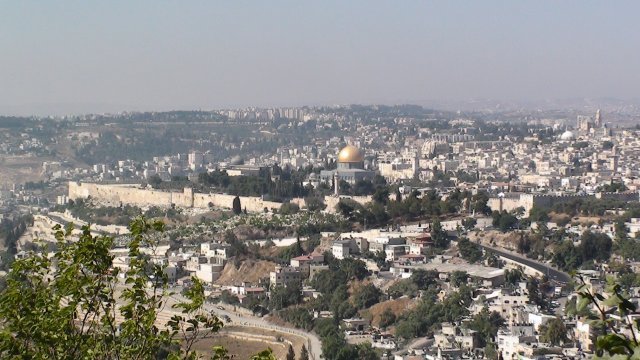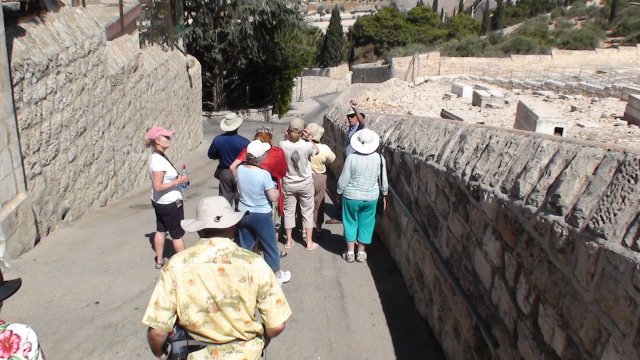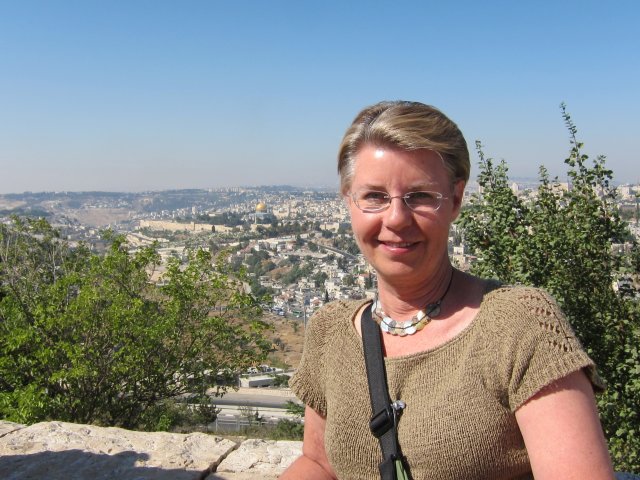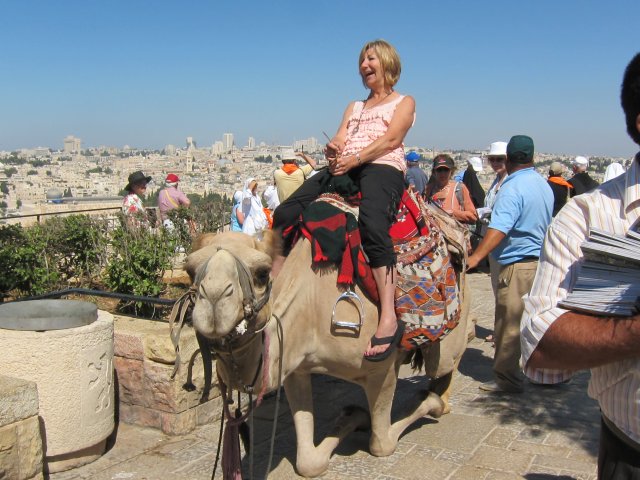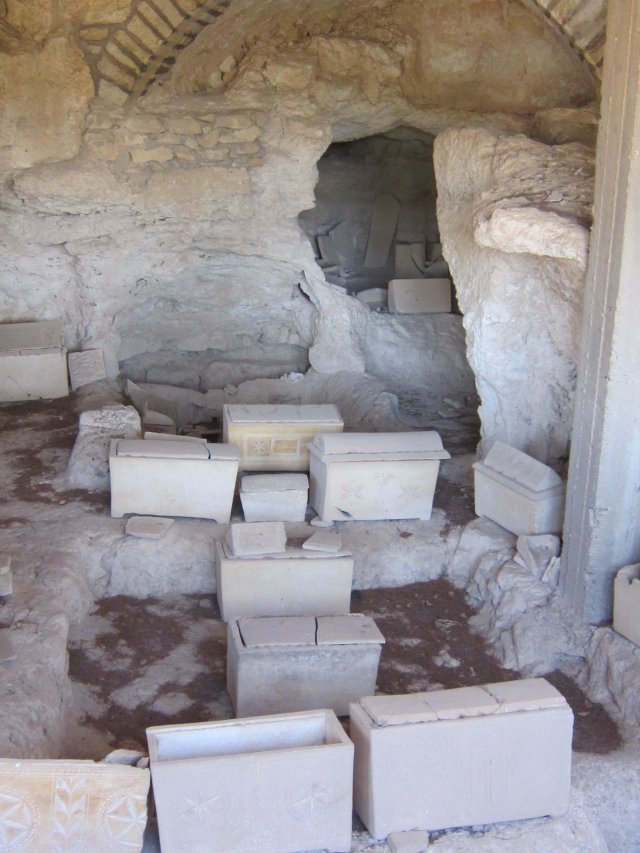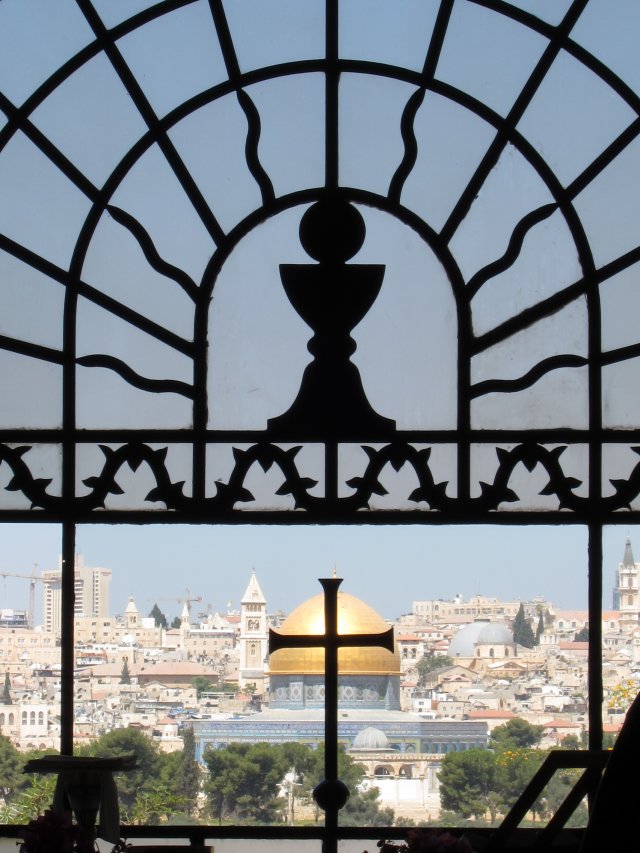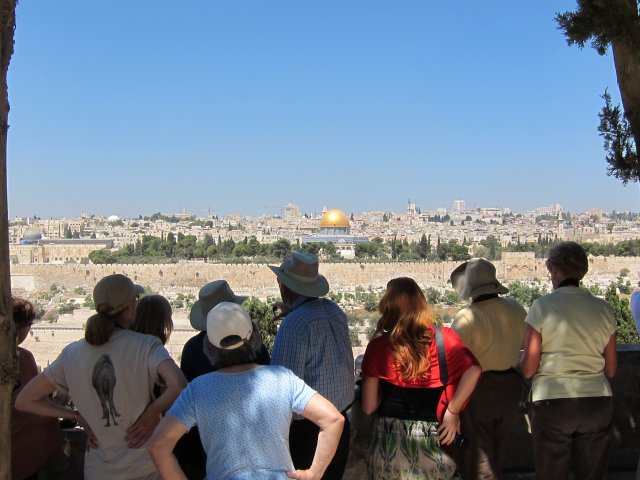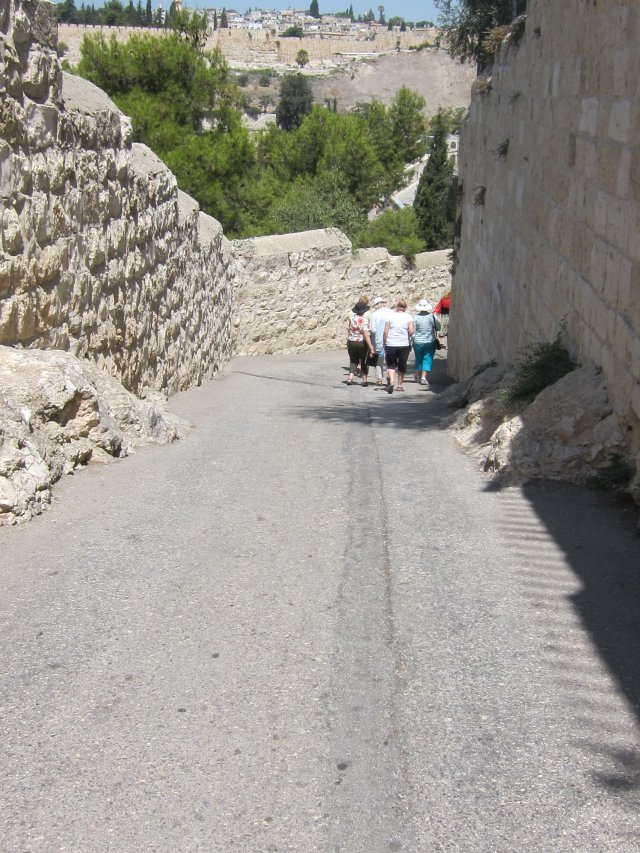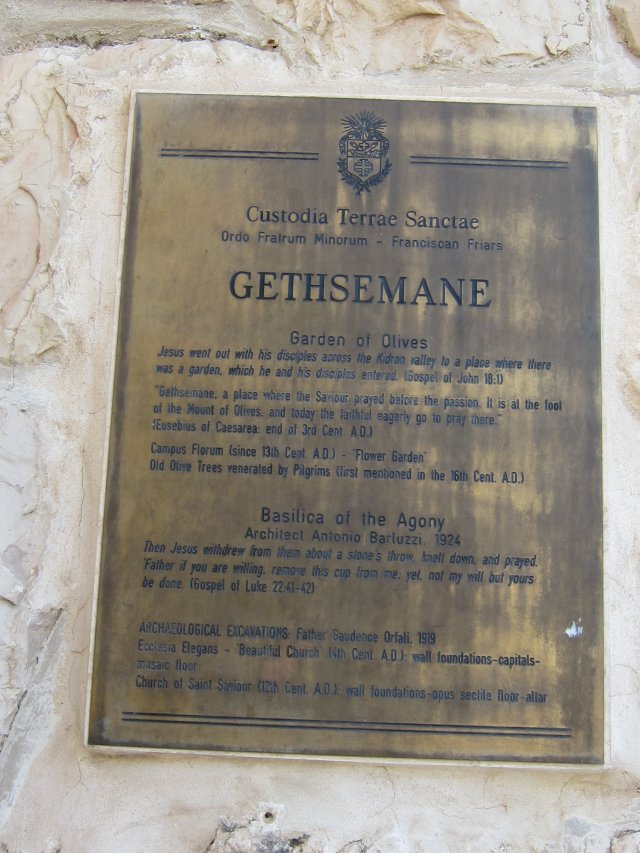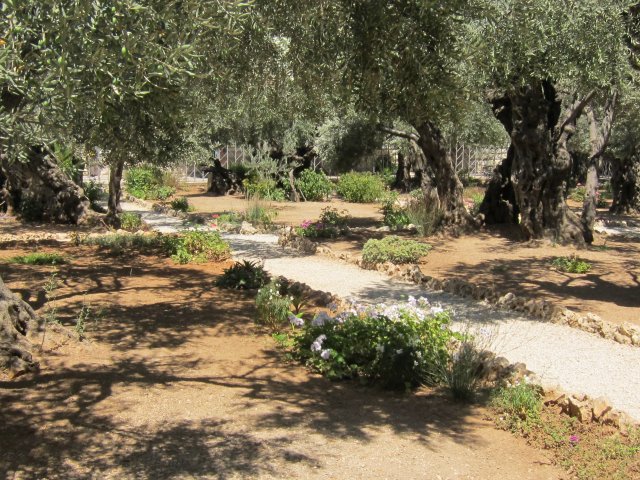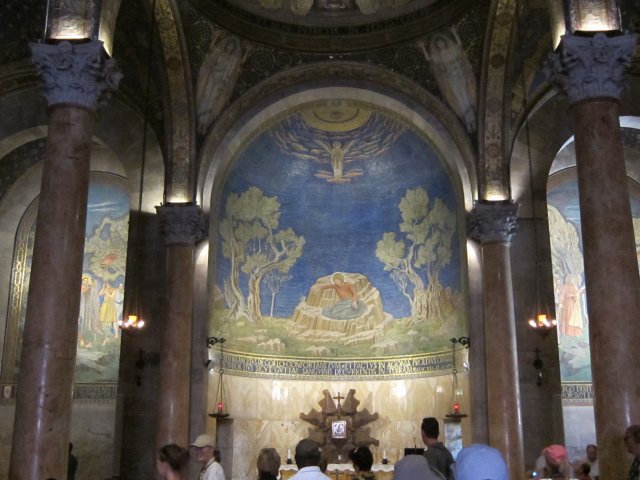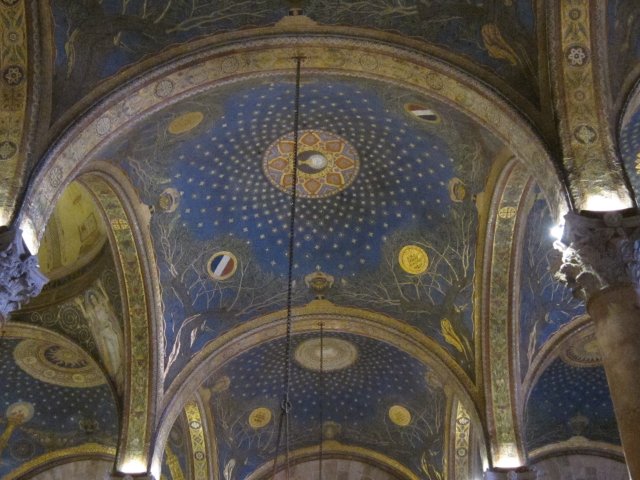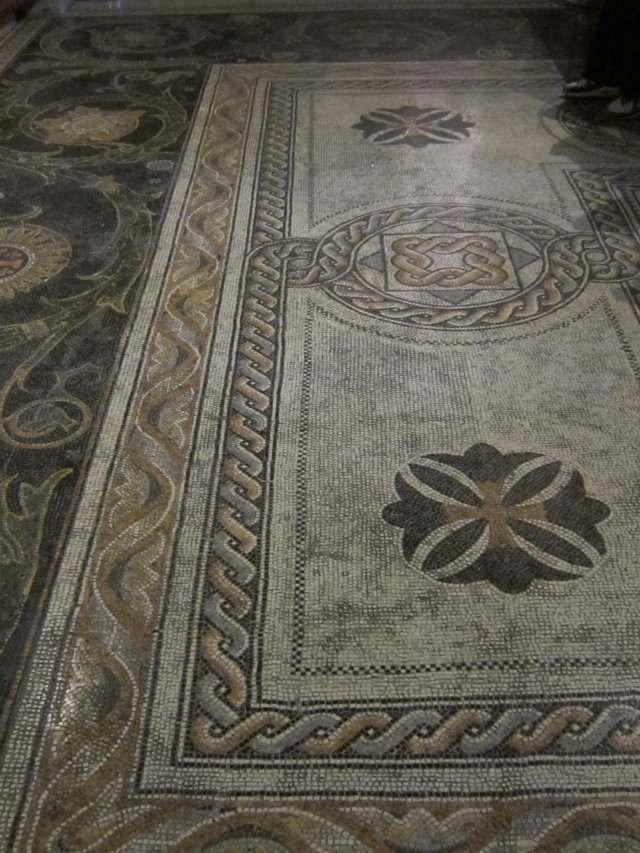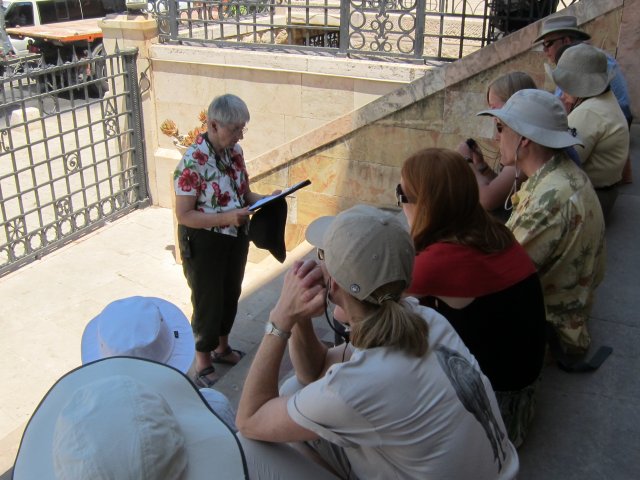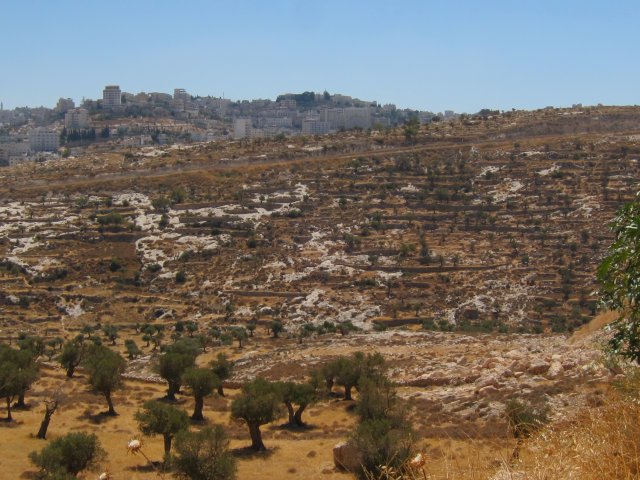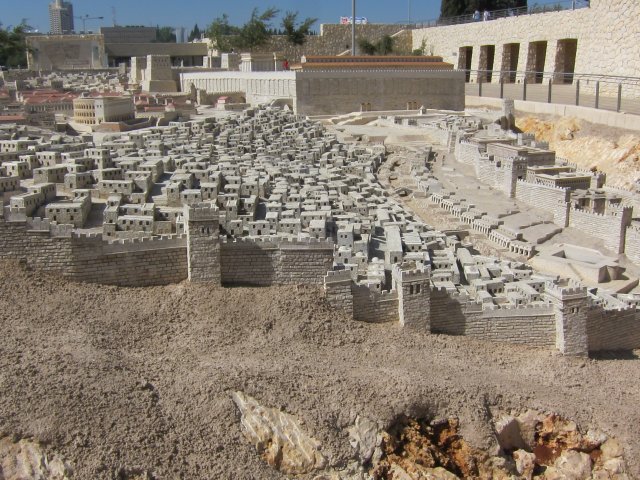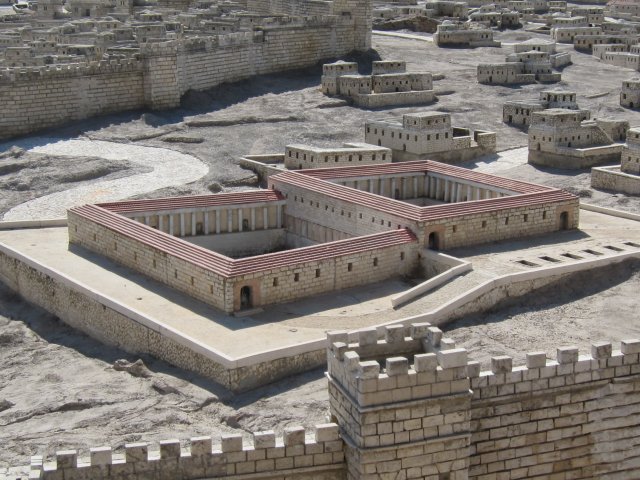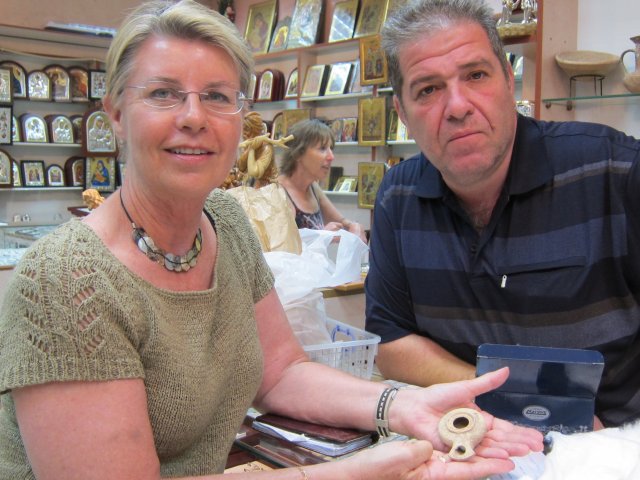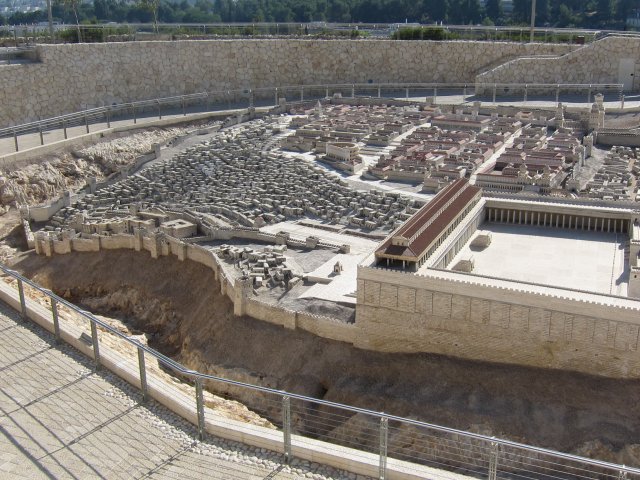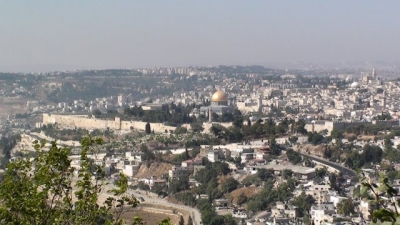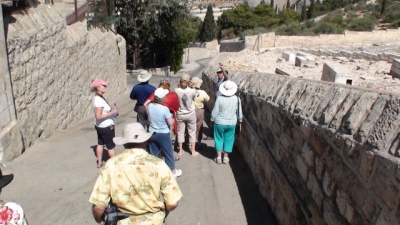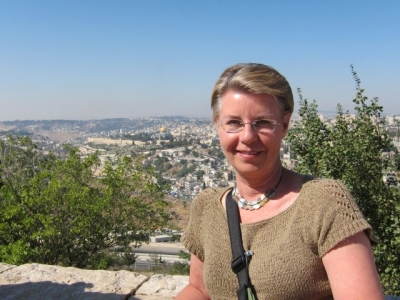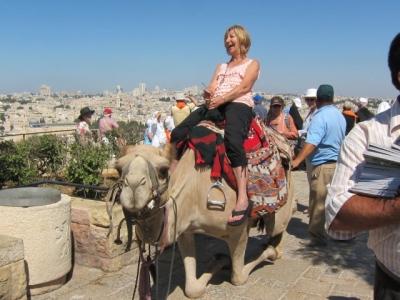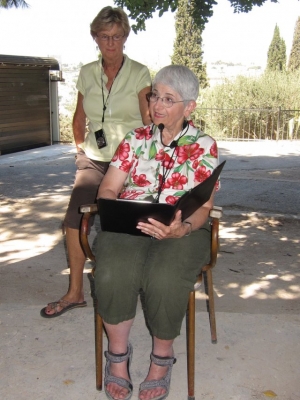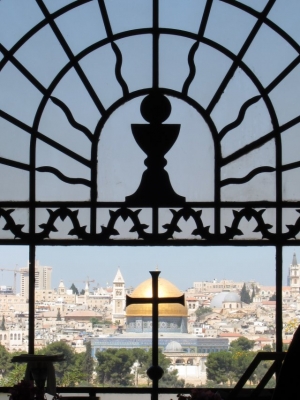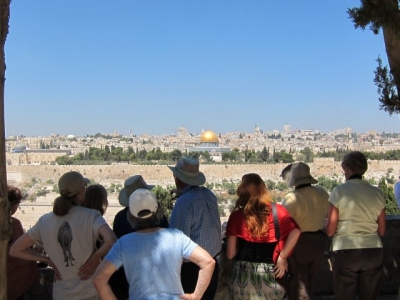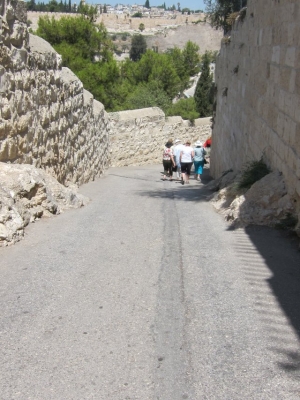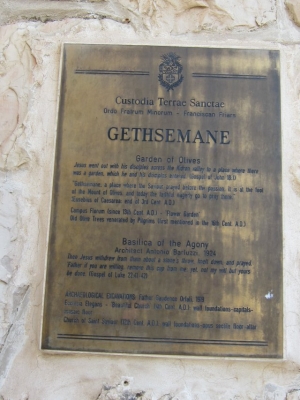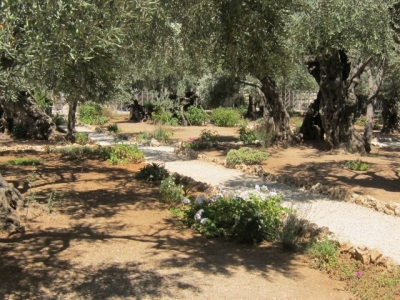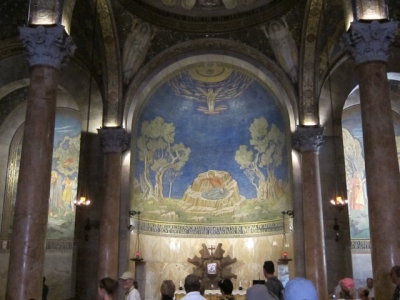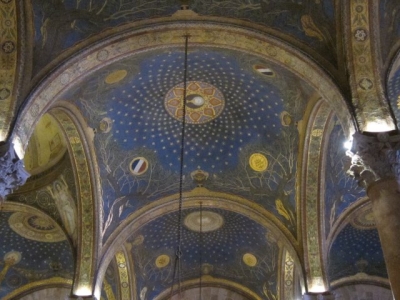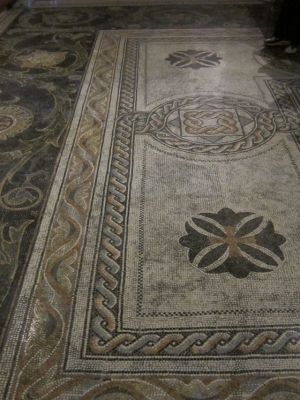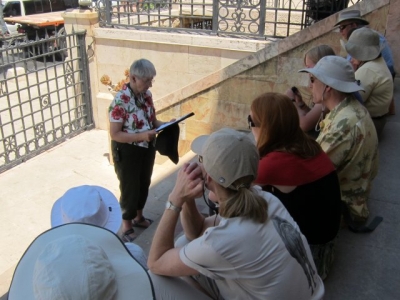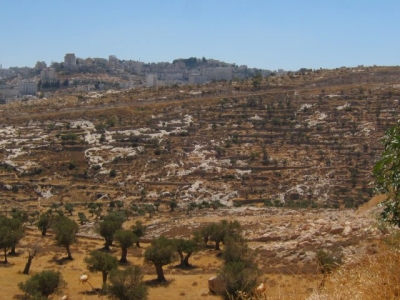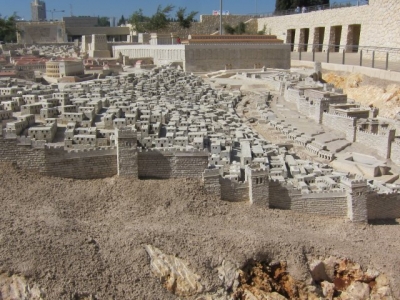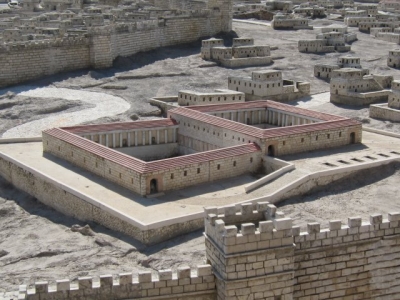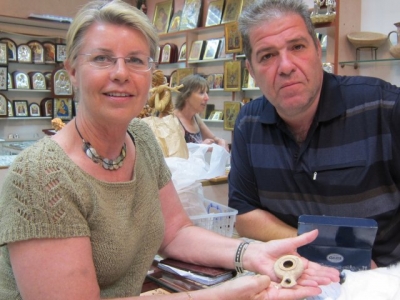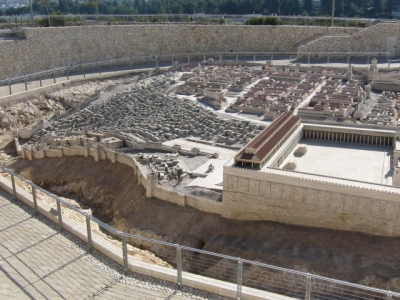Day 9 — Around Jerusalem
What a difference to be back in a hotel, and to not have to pack our luggage to load on the bus this morning! This gave us a little more time before hopping on the bus.
I’m going to have a bit of trouble describing the events of the next couple of days. As I mentioned earlier, I’m not trying to get all the dates and names right, but just record where we went and how I felt about it. This is doubly true being in Jerusalem. This place has such a rich history and everything is so crowded together, it’s hard to describe everything. That, mixed with the fact that many of the historic sites are surrounded by, or covered over by, new construction, makes being accurate more the task of the historian than me. Anyway, here goes.
We started with another overlook of the walled city of Jerusalem, the most prominent features of which are the Dome of the Rock Mosque with its gold dome, and the walls. From a distance, it’s often hard to see if the hillsides or fields are just rocks or architectural features of some sort. Mostly I think they’re rocks and/or terraced walls interwoven with walking paths.
You know, at least the photographers among you know, that your pictures tend to all be of places and other people. Since you’re taking the pictures, you’re not in those pictures. This can make the evidence that you were actually there pretty slim! So a couple of pictures in the slideshow below are ones other members of the group graciously offered to take of me on location. One shows the golden dome of the mosque just to my left, about ear level. Shameless statement to say that I was there (am here?).
I had to include the camel picture of Bev. She was having such a good time! She had wanted someone to get her picture on one when we did our camel ride at the Bedouin camp, but since everyone else was on a camel at the same time, the results were not great. I like the expression on her face (and the camel’s too!) during today’s photo op. Hi Bev!
After the overview of the city, we headed down the “Palm Sunday Road,” the path Jesus took coming into Jerusalem, where the crowds enthusiastically welcomed him, putting palm branches and their own cloaks in front of the donkey he was riding. What surprised me about this road is how steep it is, and how at this point the road is downhill. I had always imagined the road to be flat or even rising a little, since these kinds of cities tend to be on a hill, but this road is further away from the city and you have to walk steeply down before you start climbing up to the city. Eye-opener for me.
Along the way, we stopped at a church grounds where there are excavations of tombs of the type that would have been used in Jesus’s day. Olene read to us, then we looked into one of the tombs. At that time, bodies were buried in tombs just temporarily, until they decomposed enough to be placed in smaller containers called ossuaries. These are the small boxes you’ll see in the picture. The tomb is behind at the right. It was about two years before a body was moved. This means that Joseph of Arimathea offering his tomb for Jesus was not a lifelong giving up of his tomb space. He knew it would be empty again after about two years, so as long as he didn’t die within that time, he’d still have use of his tomb. Of course, the tomb was emptied after just three days, but that was just a bonus for him. 😉
We stopped by the church building where services were in progress. Apparently they have very short services for the tourists who are Catholic. They were quite patient with those of us who were taking pictures. I took quite a few, and only on the last one did I get the shot that Mishi had told us we could set up if we were lucky. This involves the cross that is in the church window behind the altar. If you position things just right, you can get that cross to “cover” the dome of the mosque. Apparently this is a subtle form of one-upsmanship. Funny, but a fine picture!
We continued down the steep road and at the bottom, after turning left, we turned left again into the Garden of Gethsemane. This is just a portion of the garden, but at least some of these olive trees were probably here in the time when Jesus and his disciples would come here. Old olive trees die, but new ones spring from their roots. Amazing tree.
This garden is now outside the Church of All Nations. It’s only about 150 years old but was built over a rock believed by tradition to be the place where “Jesus wept,” but who knows for sure? In any case, the artwork on the walls (paintings), windows (stained glass), and floor (mosaics) were fabulous, not to mention the statues ouside. So even though this church is a rather recent addition to the scene, I couldn’t resist some pictures.
Then we gathered on the steps outside for another reading from Olene.
And next? Shopping! Rather than spend lots of money for uncertain quality merchandise at shops at the tourist traps, Mishi had recommended coming to a shop where he could vouch for the quality. (And they served us pizza for lunch, too.) I was attracted to an oil lamp of the type that would have been used in Jesus’s day, so I stretched my budget and bought it. This isn’t a replica, but a genuine antiquity, complete with certificate. It’s beautiful. I hope I can get it home in one piece! After surviving unbroken for 2000 years, it should’t get cracked by my hands on the way back to Texas!
Next we stopped at a “shepherd’s field.” This isn’t a tourist stop (so no vendors, yay!), but what just looks now like an abandoned field. Here I got another misconception corrected. In the picture, you’ll see Bethelem in the background (on the left). The fields where the shepherds graze their flocks are actually on built terraces where wheat and barley would have been grown, at the appropriate time of year, of course. Shepherds would graze the flock outside of the city for several days, with the shepherds grouping together at night so they could take turns being on watch. Otherwise, the poor shepherds wouldn’t get any sleep because they’d have to watch over their flock by day and night.
And then, the Israel Museum where the Dead Sea Scrolls are kept. This place has a large (maybe “huge” would be a better word) replica of the city of Jerusalem in the second temple period. It’s accurate enough to give a good idea of how the city looked during that specific period. BTW, the two square buildings that share a wall is the Pool of Bethesda. This was built by Herod to be a source of water for the pilgrims and travelers visiting the city since that was a necessary commodity.
Pictues were strictly forbidden in the museum itself, so I can’t show you what we saw there, but it was wonderful, just as everything else we’ve seen has been.
Then it was back to the hotel for a little rest, dinner, then we went out again and into the old city via the Jaffa gate for an evening “Sound and Light Show.” Pictures there were forbidden, too, so I have nothing to show of the event. I did get a couple of good pictures of the lighted walls, though. I’ll add those to this post tomorrow. For now, it’s off to bed since we have an early start in the morning to make our appointment to visit the Western Wall. Can’t miss that!
(BTW, I found a way to resize the pictures so they won’t take so long to load. The quality’s a little less, but perfectly acceptable for this purpose.)
